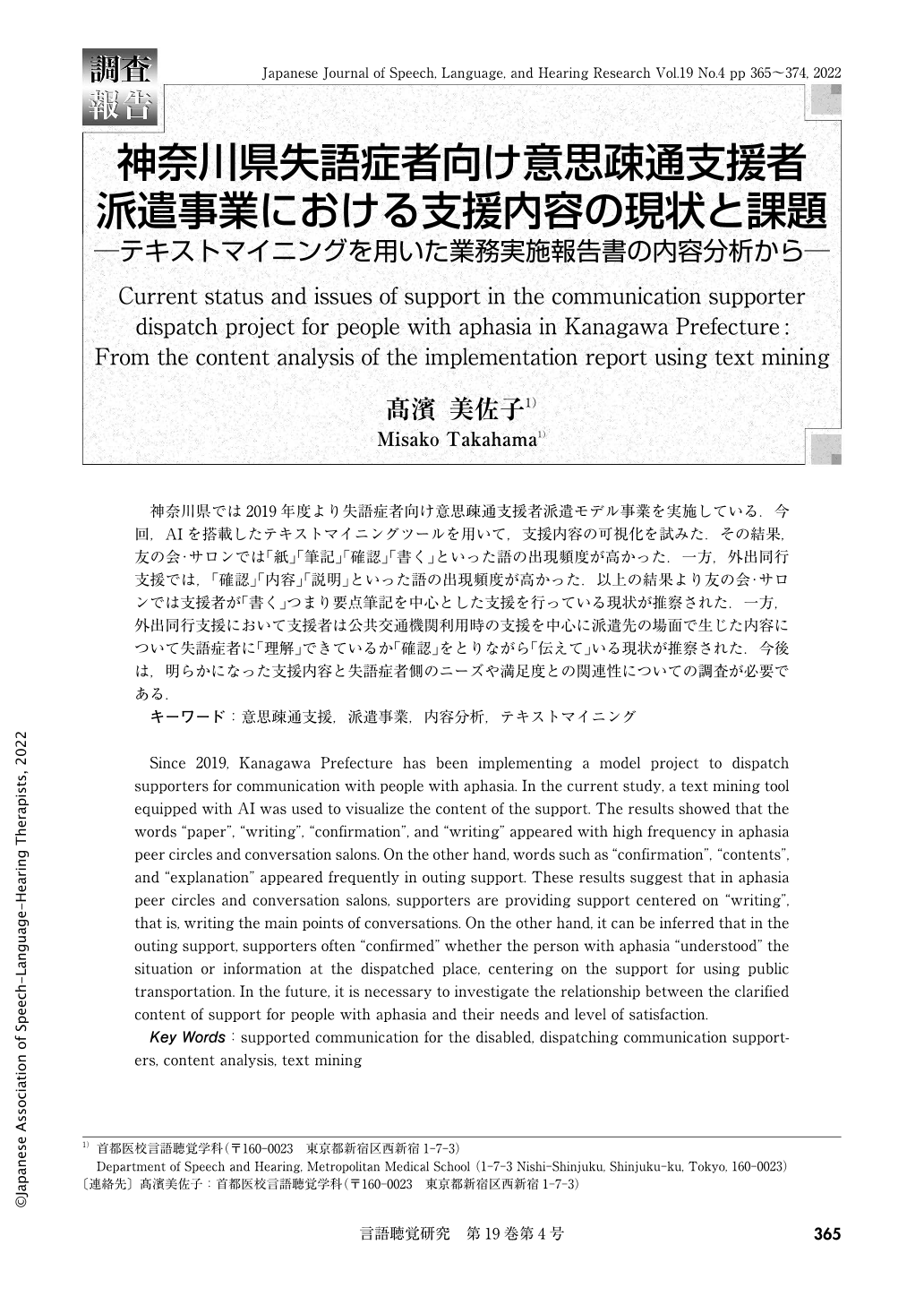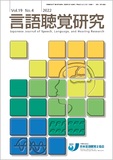Japanese
English
- 有料閲覧
- Abstract 文献概要
- 1ページ目 Look Inside
- 参考文献 Reference
神奈川県では2019年度より失語症者向け意思疎通支援者派遣モデル事業を実施している.今回,AIを搭載したテキストマイニングツールを用いて,支援内容の可視化を試みた.その結果,友の会・サロンでは「紙」「筆記」「確認」「書く」といった語の出現頻度が高かった.一方,外出同行支援では,「確認」「内容」「説明」といった語の出現頻度が高かった.以上の結果より友の会・サロンでは支援者が「書く」つまり要点筆記を中心とした支援を行っている現状が推察された.一方,外出同行支援において支援者は公共交通機関利用時の支援を中心に派遣先の場面で生じた内容について失語症者に「理解」できているか「確認」をとりながら「伝えて」いる現状が推察された.今後は,明らかになった支援内容と失語症者側のニーズや満足度との関連性についての調査が必要である.
Since 2019, Kanagawa Prefecture has been implementing a model project to dispatch supporters for communication with people with aphasia. In the current study, a text mining tool equipped with AI was used to visualize the content of the support. The results showed that the words “paper”, “writing”, “confirmation”, and “writing” appeared with high frequency in aphasia peer circles and conversation salons. On the other hand, words such as “confirmation”, “contents”, and “explanation” appeared frequently in outing support. These results suggest that in aphasia peer circles and conversation salons, supporters are providing support centered on “writing”, that is, writing the main points of conversations. On the other hand, it can be inferred that in the outing support, supporters often “confirmed” whether the person with aphasia “understood” the situation or information at the dispatched place, centering on the support for using public transportation. In the future, it is necessary to investigate the relationship between the clarified content of support for people with aphasia and their needs and level of satisfaction.

Copyright © 2022, Japanese Association of Speech-Language-Hearing Therapists. All rights reserved.


